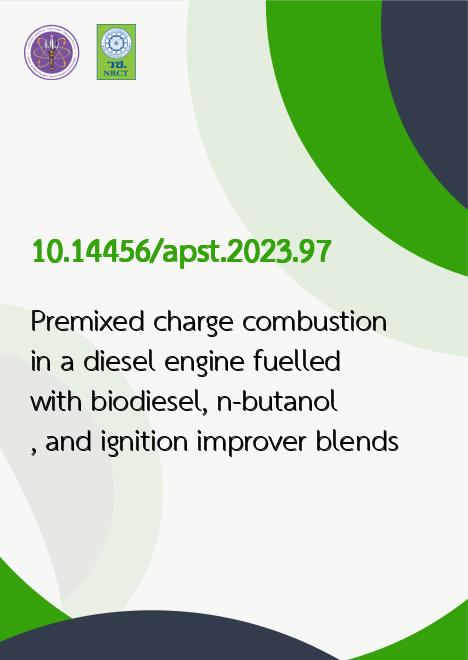
|
Premixed charge combustion in a diesel engine fuelled with biodiesel, n-butanol, and ignition improver blends |
|---|---|
| รหัสดีโอไอ | |
| Creator | Gangeya Srinivasu Goteti, |
| Title | Premixed charge combustion in a diesel engine fuelled with biodiesel, n-butanol, and ignition improver blends |
| Contributor | Tamilselvan Palsami |
| Publisher | Asia-Pacific Journal of Science and Technology |
| Publication Year | 2566 |
| Journal Title | Asia-Pacific Journal of Science and Technology |
| Journal Vol. | 28 |
| Journal No. | 6 |
| Page no. | 11 |
| Keyword | Prosopis juliflora methyl ester, Ignition improver, Cetane number, Diesel engine, Premixed charge compression ignition |
| URL Website | https://www.tci-thaijo.org/index.php/APST |
| Website title | https://so01.tci-thaijo.org/index.php/APST/article/view/260499 |
| ISSN | 2539-6293 |
| Abstract | The research aims to achieve optimised combustion by utilising the benefits of both spark ignition engine (SI) and compression ignition (CI) engine combustion properties. This research focuses primarily on gaining the advantages of maximum thermal efficiency and reduced emissions. This research also investigates the usage of biodiesel and an ignition improver with improved operating conditions by supplying n-butanol with preheated air. The experimental work was first conducted for the development of preliminary data using neat diesel. It was then performed using a blend of Prosopis juliflora methyl ester (PJME), diesel, and di-ethyl ether as an additive. This blend consists of PJME 25%, diesel 74%, and di-ethyl ether (DEE) 1% on a volume basis and is named B25DEE1. With this blend, improved brake thermal efficiency and reduced emissions were observed. The experiment was repeated by port injecting n-butanol into the preheated air stream (35?C-40?C) in a proportion of 10% volume to the primary injected fuel. This method was used to achieve premixed charge compression ignition. This combustible mixture was named n-butanol vapours (B25DEE1+NB). The engine performance demonstrated improved brake thermal efficiency as well as lower emissions (HC, CO, smoke, and NOx). Additionally, higher in-cylinder pressures 86.6 bar and heat release rates of 49.12 J/0CA were noted. |